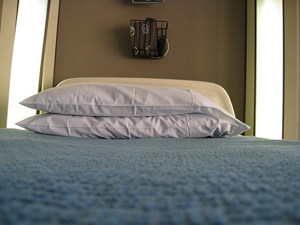When some people say that they prefer to recover at home rather than in the hospital to avoid getting sicker than ever, they’re probably right. That’s because your expectations of a sterile room for new patients when you first come in may not be met. There are pathogens on the surfaces of the hospital room that are not easily removed even with the use of the strongest cleaning and disinfection techniques and chemicals. They are usually pathogens that cause healthcare-associated infections (HAIs).
HAIs are actually among the largest culprits in patient mortality and morbidity. These pathogens often come from the patient’s endogenous flora, although studies have estimated that around 20% to 40% of these HAIs are actually from the healthcare personnel’s contaminated hands as they got in contact with contaminated hospital surfaces or patients. Various researches have supported that environmental contamination does aid in the easy transfer of Vancomyn-resistant Enterococcus (VRE) and methicillin-resistant Staphylococcus aureus (MRSA) species, as well as the nosocomial transfer of Clostridium difficile, norovirus, and Acinetobacter spp.
These pathogens are hard to remove off surfaces and tend to stay alive for a long time. This could explain why hospitals seem to have become breeding grounds for HAIs, a place where patients were supposed to be recovering. The hospital pillows and beds are unknowingly sources of such infections.
A study conducted by the Promise Hospital on their reusable vinyl covered pillows showed that these pillows were also covered in pathogenic bacteria. There were 38 out of 100 pillows that were contaminated with pathogens such as VRE, MRSA, Escherichia coli, yeast, Providencia stuartii, Klebsiella pneumonia, Coagulase-negative Staphylococci, Bacillus species, and Gram-positive Cocci and Diptheroids. Three of the 38 even had over three pathogens each and 15 of had over two pathogens each.
Cross-contamination does happen to hospital pillows, possibly due to the varying pillow condition, disinfection process, and the disinfectant used. The contamination may be passed on from the pillows to the patient, from the patient to the pillows, and from the pillows to the healthcare personnel. Uniform and rigorous processes should be outlined to effectively disinfect the hospital pillows and beds, as well as outbreak investigations. The Promise Hospital is now considering using barrier pillow covers with or without a layer of antimicrobial protection.
Looking to educate yourself further about infection control? Get your Approved NYS Infection Control and Barrier Precautions certificate online with us now! Click here to get started.
You may learn more about the topic in the links below.

